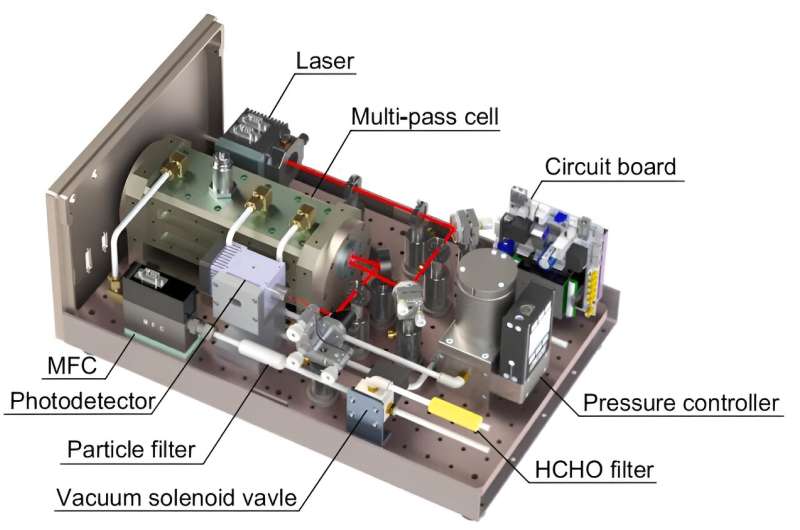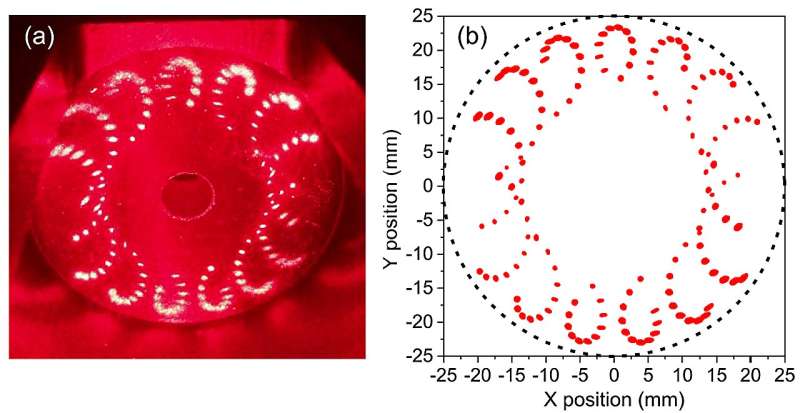This article has been reviewed according to Science X's editorial process and policies. Editors have highlighted the following attributes while ensuring the content's credibility:
fact-checked
trusted source
proofread
Highly sensitive portable sensor developed for formaldehyde detection

Researchers led by Prof. Zhang Weijun from the Hefei Institutes of Physical Science of the Chinese Academy of Sciences (CAS) have developed a highly sensitive portable laser absorption spectroscopy formaldehyde (HCHO) sensor using a compact spherical mirror multi-pass cell. The results were published in Sensors and Actuators B: Chemical.
HCHO is an important gaseous pollutant. In atmospheric chemistry, HCHO serves as a vital intermediate in the oxidation of both man-made and natural volatile organic compounds, contributing to our understanding of photochemical pollution formation mechanisms. Excessive formaldehyde levels in indoor environments are known to be a major risk factor for cancer, particularly leukemia. Therefore, real-time monitoring of atmospheric formaldehyde is essential for studying the chemistry of air pollution and its potential health impacts.
In this work, a compact multi-pass optical cell with a high fill factor was proposed to meet the development needs of miniaturized, fast-response, and highly sensitive TDLAS instruments. Its size of 46 × 28 × 16 cm3 made it easily transportable.

"We have already carried out some relevant work in 2019," said Prof. Zhao Weixiong, corresponding author of the study, "a novel spherical mirror cell with a long optical path length was used in a mid-infrared tunable laser absorption spectroscopy (TDLAS) device for atmospheric formaldehyde measurements."
Building on the previous experiment, further optimizations were made in this study.
The key innovation was the design of a compact, improved multi-pass spherical mirror cell consisting of two 5 cm diameter spherical mirrors separated by 17.7 cm. The optimized design ensures the long absorption path length and helps improve the compactness of the device.
Another notable feature of this sensor is its fast-sampling response time of less than one second. This allows for the effective application of the fast optical fringes that can interfere with measurement sensitivity.
"This work has laid the foundation for further development of portable hand-held or in-vehicle formaldehyde detection devices," said Dr. Fang Bo, first author of the study.
More information: Bo Fang et al, Highly sensitive portable laser absorption spectroscopy formaldehyde sensor using compact spherical mirror multi-pass cell, Sensors and Actuators B: Chemical (2023). DOI: 10.1016/j.snb.2023.134379
Provided by Chinese Academy of Sciences





















